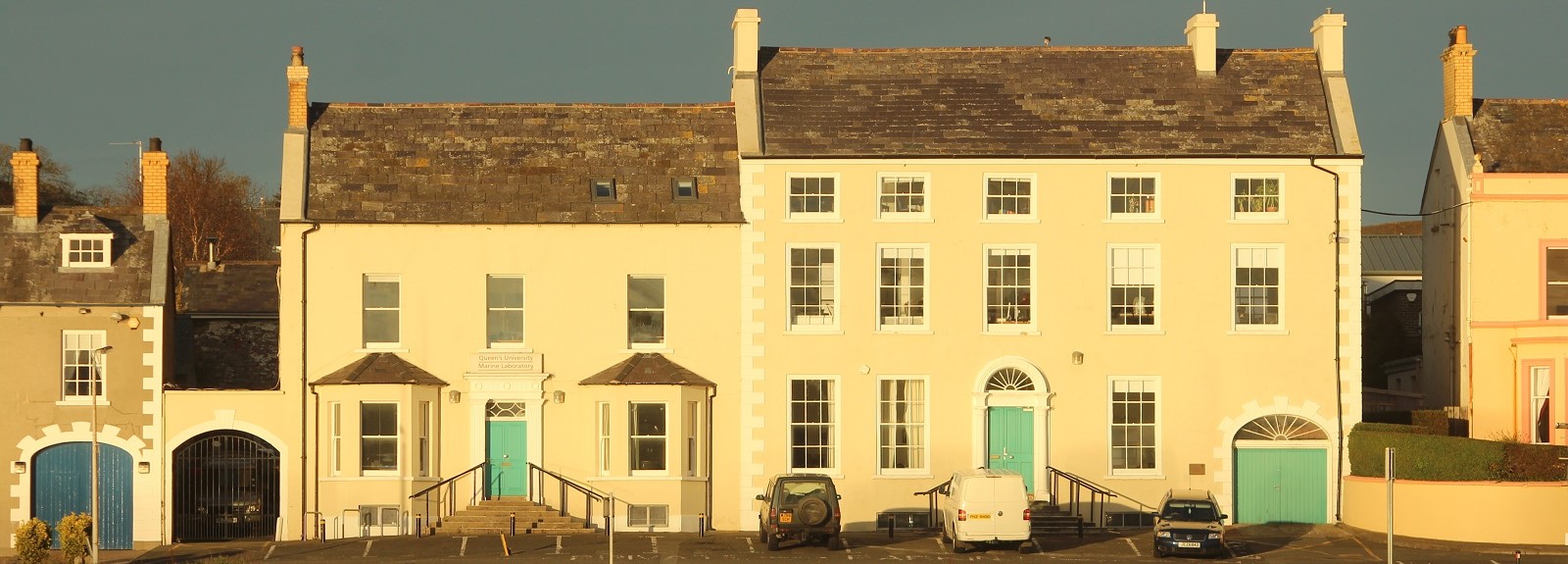History
This neoclassical building was built in 1810 when Portaferry was a busy thriving coastal port. For over a hundred years the town was full of ship builders, master mariners, ship owners, rope-makers and ships’ chandlers. Dozens of ships were built here. In 1802, one of the largest vessels ever built in Ireland, the 500 ton Bess,was launched from the dockyard of Captain Edward Conway of Portaferry.
Local products such as potatoes, wheat and barley were exported to major industrial cities such as Belfast, Dublin, Glasgow and Liverpool. Sailing ships, many built in Portaferry, sailed from the quay to take passengers on a six week journey to North America.
Grand houses lined the shore where the majority of trade was conducted. It was, therefore, practical for the Belfast Bank to open a branch in these premises in 1865. It remained a bank until 1936. The building has been described as a fine three-story and basement house with a Doric porch with radial fanlight. It also has neoclassical features such as sash windows and pilasters highlighting the main entrance.
80 years of marine science at Queen’s University Marine Laboratory
The Marine Biology Station was founded in Portaferry in 1945 through the efforts and enthusiasm of Mr G. Williams. However, the University’s interest in marine biology can be traced back much further than this. The H.M.S. Challenger expedition (1872–1876) laid the foundations for modern oceanography. The Challenger expedition was led by Charles Wyville Thomson, who at the time was Regius Professor of Natural History at Edinburgh University having moved there from Queen’s University (formerly known as Queen's College Belfast), where he was Chair of Natural History. The ground work for the Challenger expedition was laid by two earlier cruises which Wyville Thomson had helped organise during his time at Belfast. These were the Lightning cruise of 1868 and the Porcupine voyage of 1869. On the latter, five days out from Belfast and 250 miles west of Ushant, Wyville Thomson dredged marine animals from 2,435 fathoms, conclusively disproving the commonly held view at that time that the deep sea was lifeless.
In 1903 the Ulster Fisheries and Biology Association was formed following a meeting between representatives of Queen’s University (Queen's College), the Belfast Natural History and Philosophy Society and the Belfast Naturalist's Field Club. Under the direction of Professor Gregg Wilson the Association established a marine laboratory with its own resident naturalist, boatman and steam launch in rented accommodation at Larne. This was effectively the first Marine Biology Station in Ireland but, although initially successful, difficulties arose with the distance from Belfast, with the other commitments of Queen's scientists and with the general lack of finance. The Larne laboratory was closed in 1908 and interest in marine science at Queen’s University declined further.
Interest in marine biology was revived following the appointment of George Williams as assistant in the Zoology Department in 1933. Undergraduates were taken to field courses based in the Fish Market building at Ardglass from 1937-1940. Subsequently shop premises at 18, Shore Road, Portaferry were hired - the window display area served as a laboratory bench for sorting live fauna and simultaneous entertainment of a local audience on the pavement outside.
The Portaferry location was particularly suitable for field work because of the rich marine life in Strangford Lough. In 1945 the University purchased the former bank building at 12, The Strand and the present Marine Laboratory was established. This was mainly due to the efforts and enthusiasm of Mr G. Williams. In 1954 Williams published a series of papers on the marine fauna of Strangford Lough that were published in the Proceedings of the Royal Irish Academy (Williams, 1954). This was the first comprehensive inventory of the marine fauna from this region.
Williams G. (1954). Fauna of Strangford Lough and neighbouring coasts. Volume 56, Section B, No. 3. Hodges, Figgis & Co. Ltd., Dublin

